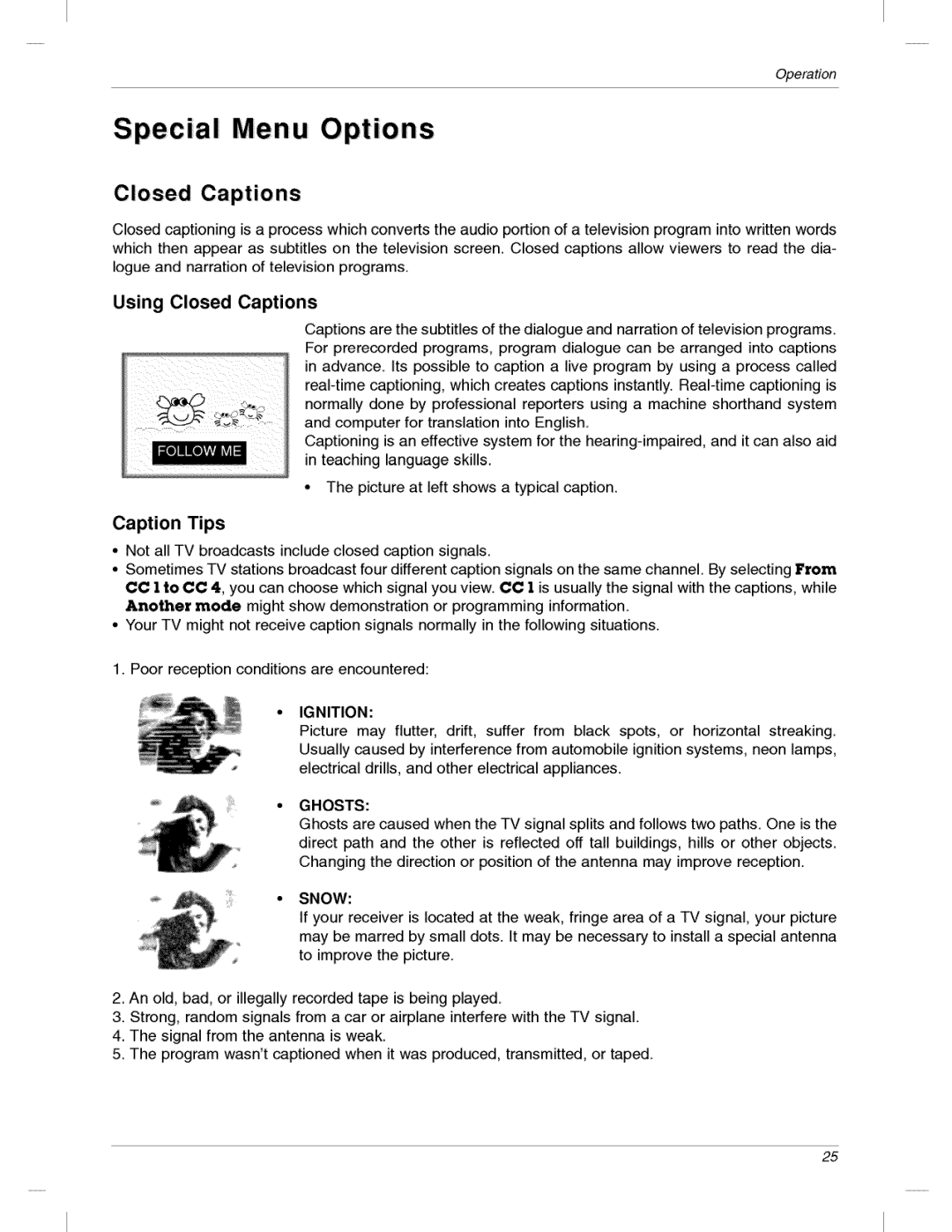
Operation
Men u Options
Closed Captions
Closed captioning is a process which converts the audio portion of a television program into written words which then appear as subtitles on the television screen. Clued captions allow viewers to read the dia- logue and narration of television programs.
Using Closed Captions
Captions are the subtitles of the dialogue and narration of television programs. For prerecorded programs, program dialogue can be arranged into captions in advance, its _ssible to caption a live program by using a process called
Captioning is an effective system for the
•The picture at left shows a typical caption.
Caption Tips
•Not all TV broadcasts include closed _ption signals.
•Sometimes _ stations broadcast four different caption signals on the same channel. By selecting Yrom CC 1 o CC 4, you can choose which signal you view. CC 1 is usually the signal with the captions, while Anohher mode might show demonstration or programming information.
° Your TV might not receive caption signals normally in the following situations.
1. Poor reception conditions are encountered:
IGNITION:
Picture may flutter, drift, suffer from black spots, or horizontal streaking Usually _used by interference from automobile ignition systems, neon lamps, electrical drills, and other electrical appliances.
GHOSTS:
Ghats are caused when the TV signal splits and follows two paths. One is the direct path and the other is reflected off tal! buildings, hills or other o_ects, Changing the direction or _sition of the antenna may improve reception.
SNOW:
If your receiver is located at the weak, fringe area of a TV signal, your picture may be marred by small dots. It may be neces_ry to install a special antenna to improve the picture.
2.An old, bad, or illegally recorded tape is being played.
3.Strong, random signals from a car or airplane interfere with the TV signal.
4.The signal from the antenna is weak.
5.The program wasn'tcaptioned when it was produced, transmitted, or taped.
25
